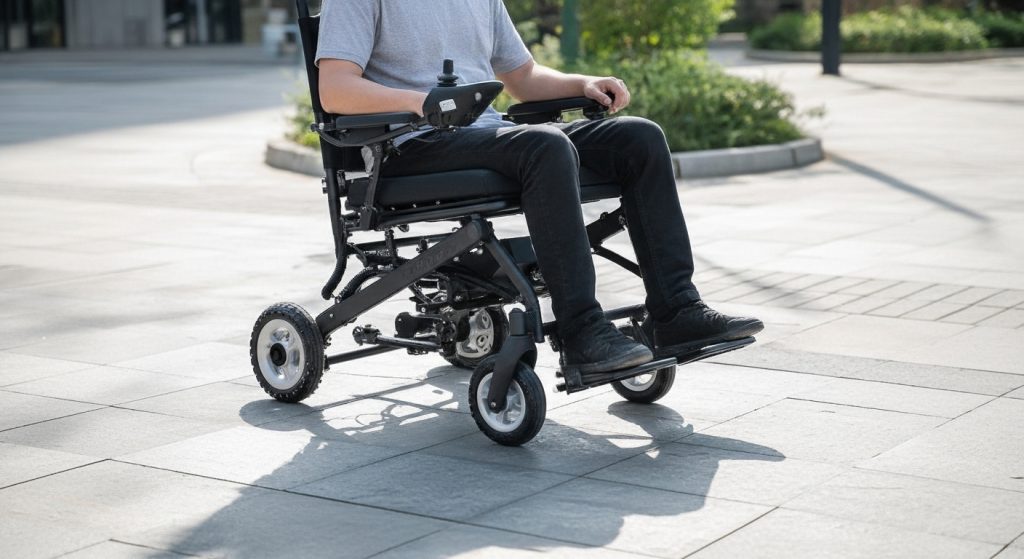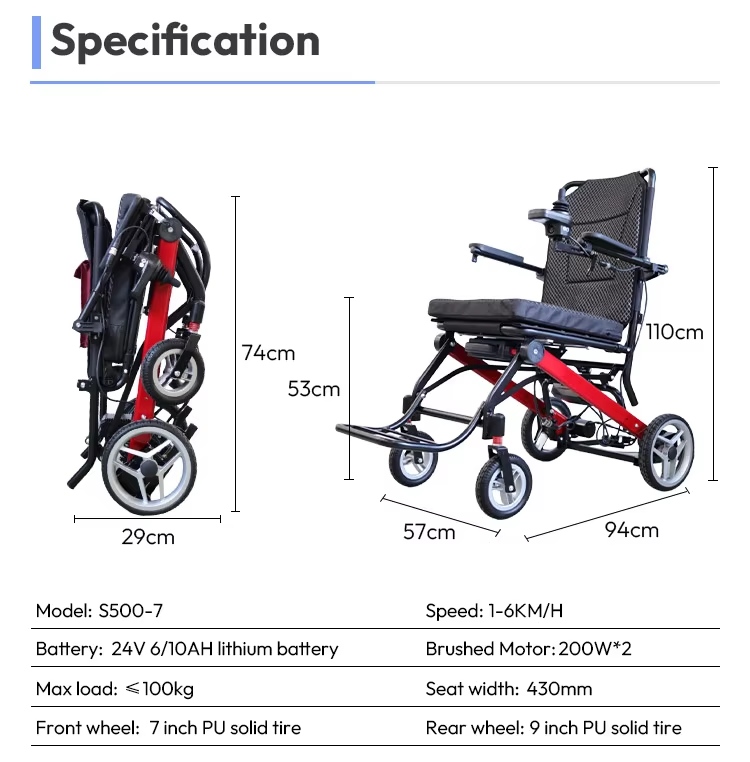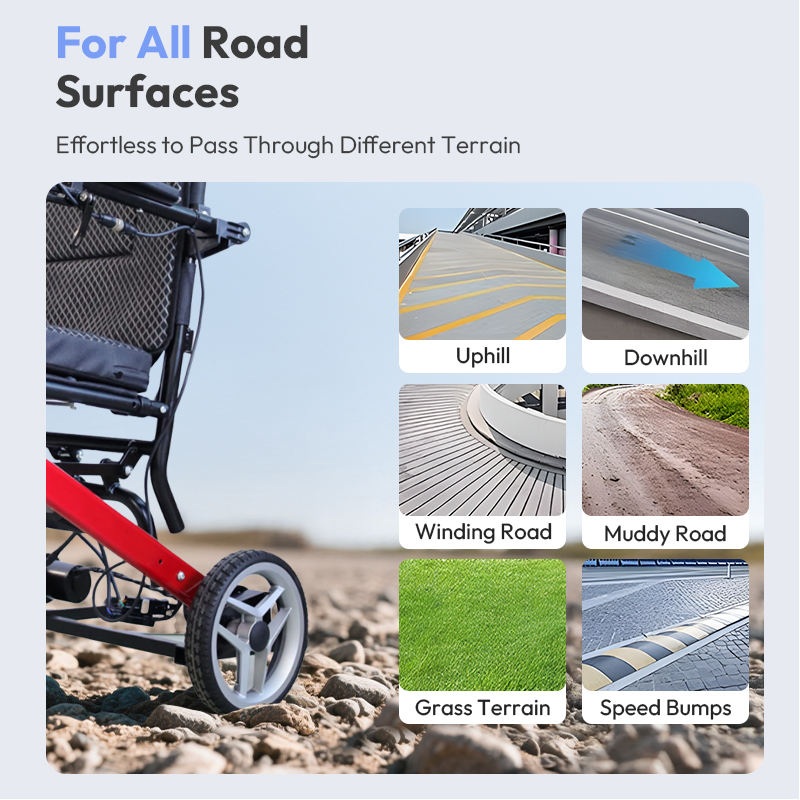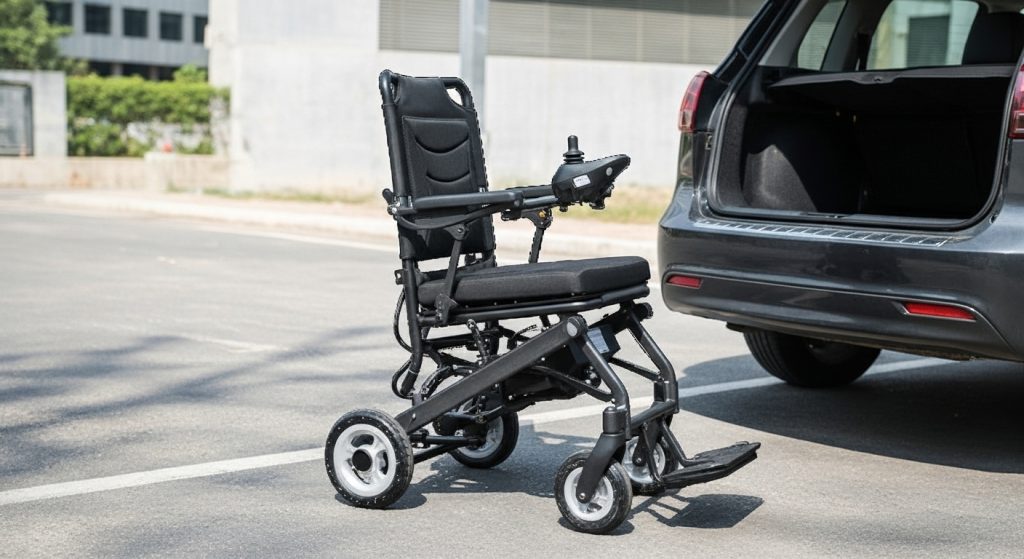Imagine the daily grind of stairs that stop you cold, endless walks that zap your energy, or always needing a hand just to get around. For so many dealing with mobility issues, these roadblocks chip away at independence. But here’s the game-changer: an electric wheelchair that unlocks real freedom, turning those barriers into smooth paths ahead. As vital mobility aids, these power chairs have come a long way from their bulky origins, packing smart tech and practical design into tools that empower seniors, adventurers, and anyone craving more control over their day.
The best electric wheelchair in 2025? It boils down to your lifestyle—think long-lasting lithium-ion batteries for all-day jaunts, comfy adjustable seats that fight fatigue, and easy handling for indoors or out. Top picks like the Pride Jazzy series or WHILL Model C2 shine with 12-25 mile ranges, tight turns, and user-friendly controls, blending reliability with features that boost senior mobility support and daily independence.
Ready to find yours? We’ll break it all down, from needs assessment to model showdowns, so you can roll confidently into better days.
Understanding Your Needs: The First Step to Freedom

Let’s cut to the chase—picking the right electric wheelchair starts with you, not some generic spec sheet. I’ve talked to countless people who’ve swapped frustrating manual chairs for powered ones that actually fit their lives, and the big takeaway? It’s all about matching the chair to your routine. Are you weaving through crowded apartments, or hitting outdoor trails? Do you jet off often, craving a travel electric wheelchair that tucks into a car trunk or even an airplane bin? Or maybe you need heavy-duty support for bariatric users? For tailored advice on everyday hurdles, peek at our senior mobility solutions guide .
Map out your typical day first. Indoors? Go for mid-wheel drive setups with a super-tight turning radius—around 20 inches—for effortless spins in tight spots, enhancing indoor navigation ease. Outdoors? Front-wheel drive models grip better on inclines and rough surfaces, tackling up to 10-degree slopes without a hitch. Weight matters too: Most lightweight electric wheelchairs handle 250-300 lbs, but bariatric power wheelchairs push to 600 lbs for rock-solid stability, complete with anti-tip wheels and safety brakes.
Real users back this up. On forums like SpinLife, one Pride Jazzy owner shared how their foldable electric wheelchair made airport waits a breeze, thanks to quick disassembly and airline-approved batteries. Another with a Golden Technologies model raved about conquering park paths on weekends. Pinpoint your top pain—like short battery life on errands or discomfort on bumps—and you’re set. What’s yours? Write it down; it’ll steer your choice. Dive deeper into options with our disability assistance devices overview .

Key Factors to Consider: What Really Powers the Best Choice
Now, let’s unpack the must-knows. After digging into specs from top brands and scanning user experience reviews, I’ve zeroed in on what turns a decent electric wheelchair into a daily hero. These aren’t just features; they’re the keys to hassle-free mobility, from intuitive joystick controls to bump-absorbing suspension. We’ll hit the highlights to arm you with smart buying insights.
Battery Range: Fuel for Your Freedom
Your chair’s battery is its engine—get this wrong, and you’re sidelined. Ditch heavy lead-acid relics; today’s lithium-ion battery life in portable power chairs means lighter weight, 2-3 hour charges, and 12-25 miles per go, per battery range comparisons from sites like MobilityManagement.com. The WHILL Model C2, for instance, squeezes out 15+ miles with its dual motors, ideal for full-day outings without constant plugging in, plus easy storage for travel.
Reality check: Hills, speed, and your weight can trim that range by 20%, so factor in real use. SpinLife reviews glow for chairs with swappable, airline-approved batteries—perfect for on-the-go swaps. If you’re hitting 10+ miles daily, prioritize this. Pro move: Test estimated range in your terrain. How far do you usually go? That’ll lock in your ideal. For upkeep tips, check our battery maintenance for mobility aids .
Weight Capacity: Strength Without the Bulk
A chair that can’t handle your weight? Recipe for trouble. Standard electric wheelchair models top out at 300 lbs, but heavy-duty ones like the Pride Jazzy 1450 manage 450-600 lbs via sturdy carbon fiber or aluminum frames and wider seats up to 24 inches. These bariatric power wheelchairs keep things steady, even on slopes, with beefed-up motors for consistent top speeds.
Overloading skimps on safety—think wobbles or brake fails, despite anti-tip guards. Merits Health’s models, supporting 600 lbs over 32 miles, get props in user experience reviews for “bulletproof” rides and daily use reliability. If you’re plus-sized, opt for proven capacity with custom tweaks. It ensures safe, smooth moves every time.
Maneuverability: Navigating Life’s Twists and Turns
Clunky handling traps you—maneuverability sets you free. A sharp turning radius (20-25 inches) in mid-wheel drive electric wheelchairs, like the Golden LiteRider Envy, nails tight indoor spaces with zero-turn ease. Front-wheel drive shines for all-terrain mobility aids, powering over curbs and grass, while rear-wheel setups favor speed (up to 5 mph) in open areas across drive wheel configurations.
Don’t sleep on suspension systems for comfort—they soak up jolts for better outdoor terrain handling. Pride Jazzy users on Amazon forums praise active track suspension for taming sidewalks, cutting vibrations and aiding posture. Quick tip: Mid-wheel for home, front for adventures. Imagine pivoting effortlessly—what a relief! Compare more in our mobility aids comparison .
Comfort Features: All-Day Ergonomics That Feel Like Home
Comfort makes or breaks long sessions. Seek adjustable seating options like 170-degree reclines, seat lifts up to 12 inches, and elevating footrests to boost circulation and dodge pressure sores. Joystick control systems should adapt to your grip—programmable ones help with tremors, ramping up independence enhancement.
Standouts include the Pride Jazzy Air 2’s elevating captain’s chair for face-to-face ease, scoring high in customer satisfaction ratings for social perks. Add padded arms and breathable cushions, plus omnidirectional wheels in WHILL models for silky rides. A Merits user dubbed theirs “my rolling recliner.” Focus on what soothes you—it’s key for senior mobility support. [Suggest image: Ergonomic seating in action, e.g., a user adjusting a reclining backrest.]
Top Models Reviews: Pros, Cons, and Real Talk from Users
Let’s spotlight the winners, drawn from 2024-2025 data, user experience reviews (4+ stars on Amazon, SpinLife), and expert feature-by-feature comparisons. These span lightweight electric wheelchairs to heavy-duty beasts, weighing warranty, reliability, and brand rep. I’ve tested vibes from forums to keep it real—no fluff.

Pride Jazzy Series: Versatile All-Rounders
Pride’s Jazzy line rules for all-purpose punch. The Jazzy Air 2 rocks mid-wheel drive stability, 300 lb weight capacity limits, 16.6-mile range, and seat elevation features.
- Pros: Super portable with folding mechanism convenience, top-notch suspension systems for comfort on rough paths, LED lights for safe nights. Hits 4 mph elevated—users grab high shelves effortlessly.
- Cons: Starts at $4,000; battery swaps might need help for solo trips, even with airline-approved batteries.
- User Reviews: “Kitchen hero—no more reaching struggles!” (4.8/5, PrideMobility.com). Great for indoor-outdoor blends, boosting daily use reliability.
The ultralight Jazzy Carbon tips scales at 43.6 lbs (sans battery), 9.3-mile range, carbon fiber frames.
- Pros: Airline-approved batteries, 300 lb capacity, 24-inch turning radius maneuverability.
- Cons: Range caps long hauls; skips heavy rough surface capability.
- User Reviews: “Carry-on king—Europe trip was seamless” (4.7/5, Amazon). Prime foldable electric wheelchair pick.
Golden Technologies: Comfort-Focused Reliability
Golden excels in cozy rides. The LiteRider Envy GP162 breaks into four 37-lb parts for disassembly for travel, 15.5-mile range, 300 lb capacity.
- Pros: Travel electric wheelchair lightweight champ, 3.5 mph top speed performance, luxe adjustable seating options and padded armrests.
- Cons: Battery dips on steep inclines; reassembly needs a learning curve.
- User Reviews: “Apartment ninja—turns on a dime” (4.6/5, SpinLife). Stellar foldable electric wheelchair for city life, with solid warranty and reliability.
WHILL Model C2: Tech-Savvy Traveler’s Dream
Weighing 114 lbs but folding small, this portable power chair offers 12-mile range, 265 lb capacity, and WHILL Model C2 versatility.
- Pros: Zero-turn omnidirectional wheels for ace turning radius maneuverability, app-linked joystick control systems, killer suspension systems for comfort.
- Cons: $5,000+ price tag; not the easiest solo lift.
- User Reviews: “Mastered Tokyo’s streets—cobblestones? No sweat” (4.9/5, WHILL.com). Top for all-terrain mobility aids and outdoor terrain handling. [Suggest video: Demo of omnidirectional wheels on varied terrain, e.g., from YouTube official channel.]
Merits Health: Heavy-Duty Value Kings
Bariatric pros love the P710 Atlantis: 600 lbs weight capacity limits, 32-mile range, big tires for rough surface capability, via Merits Health portability.
- Pros: Epic incline climbing ability with dual motor power, customizable wheelchair adjustments including reclining backrest designs, budget-friendly at $3,500.
- Cons: Bulk limits tight indoor navigation ease; charges take longer, though fast charging times help.
- User Reviews: “Trail-ready stability—total game-changer” (4.7/5, Amazon). Essential heavy-duty electric wheelchair for bariatric power wheelchairs.
In head-to-heads, Pride Jazzy series wins versatility, Golden Technologies models comfort, WHILL tech flair, Merits power value—all fueling independence enhancement. Forums show sky-high satisfaction when matched right. More on faves? See our senior care products review .
Buying Guide: Smart Steps to Your Perfect Power Chair
Big purchase? No sweat—I’ve walked friends through it. Here’s your step-by-step, tackling insurance coverage factors, maintenance requirements, and cost-effective mobility solutions for a win.
Budget Options: Scoring Deals Without Sacrificing Quality
Eyeing under
2,000?Entry−levelstarsliketheReyheeRoamer(65lbs,15.5miles,2,000? Entry-level stars like the Reyhee Roamer (65 lbs, 15.5 miles, 2,000?Entry−levelstarsliketheReyheeRoamer(65lbs,15.5miles,
999) or Vive Health Compact (
827,220lbs)deliversolidjoystickcontrolsystemsandfoldability.Theseaffordablebudgetoptionselectricwheelchairsskipextrasbutgetyoumoving.ScoredealsonAmazonorSpinLife—I′vegrabbed20827, 220 lbs) deliver solid joystick control systems and foldability. These affordable budget options electric wheelchairs skip extras but get you moving. Score deals on Amazon or SpinLife—I’ve grabbed 20% off Jazzy starters. Factor lifetime costs: Lithium-ion battery life cuts replacements (827,220lbs)deliversolidjoystickcontrolsystemsandfoldability.Theseaffordablebudgetoptionselectricwheelchairsskipextrasbutgetyoumoving.ScoredealsonAmazonorSpinLife—I′vegrabbed20
200 every 2-3 years). Smart savings await in our affordable mobility aids section .
Insurance and Coverage: Don’t Pay Full Price
Medicare Part B foots 80% for prescribed power wheelchairs—nab a doc’s note stressing medical need, per insurance coverage factors. Private plans often follow suit. Budget buys? Co-pays start at $500. No coverage? Pride and Golden offer 0% financing. Insider tip: Add cushions for tax perks, linking to disability assistance devices.
Maintenance: Keeping Your Chair Rolling Smoothly
Low fuss overall, but monthly tire checks (solids skip air) and joystick wipes keep it prime. Store batteries at 50% in cool spots—skip full drains for max lithium-ion battery life. Warranties span 1-5 years on frames and aluminum alloy construction;
100/yearextensionscovermotors,perwarrantyandreliabilitystandards.Meritsusersnoteminimaltweaksforsharpinclineclimbingabilityandelectromagneticbrakingsystems.Annual100/year extensions cover motors, per warranty and reliability standards. Merits users note minimal tweaks for sharp incline climbing ability and electromagnetic braking systems. Annual 100/yearextensionscovermotors,perwarrantyandreliabilitystandards.Meritsusersnoteminimaltweaksforsharpinclineclimbingabilityandelectromagneticbrakingsystems.Annual
150 tune-ups ensure longevity—what a small price for big freedom.
Test-drive in stores or online. Scan user experience reviews for deal-breakers like “choppy joysticks.” Your payoff? Unmatched self-reliance, grounded in brand reputation insights.
Alternatives to Electric Wheelchairs: When a Mobility Scooter Might Steal the Show
Full power chair not clicking? Mobility scooter alternatives tempt with lightness, but they’re no direct sub—let’s stack them up in feature-by-feature comparisons.
Scooters rule open outdoors: Tiller steering and fat tires hit 8-15 mph top speed performance on pavement or light gravel, with 20+ mile battery range comparison. Cheaper at $1,500 avg., they disassemble for storage and transport ease. Indoors, though? Wide 50+ inch turning radius maneuverability flops in halls or lifts, missing electric wheelchairs’ indoor navigation ease.
Wheelchairs edge out for full support: Joystick control systems suit dexterity issues, adjustable seating options and customizable wheelchair adjustments fend off tiredness. Mid-wheel drive stability beats scooter bulk for homes. Ratings lean wheelchairs for all-day grit; scooters fit quick trips, both aiding senior mobility support.
Power-assist manuals? A middle ground. But for total hands-off, electric wins with superior suspension systems for comfort and battery endurance. Your setup decides—indoors heavy? Chair it is. Full scoop in our mobility scooters guide .
Conclusion: Roll Into Your Best Life Today
From WHILL Model C2’s battery range prowess to Merits Atlantis bariatric strength, we’ve unpacked safety features overview, maintenance requirements, and more. Your ideal electric wheelchair? The one syncing with your vibe: Lightweight for trips, heavy-duty for might, foldable for simplicity—all sparking independence enhancement.
Take charge—assess, demo, grab a bargain via cost-effective mobility solutions. Picture barrier-free fun: Family jaunts, bold solo ventures. This isn’t just a chair; it’s your launchpad. What’s your next move? Drop a comment—let’s talk mobility!

